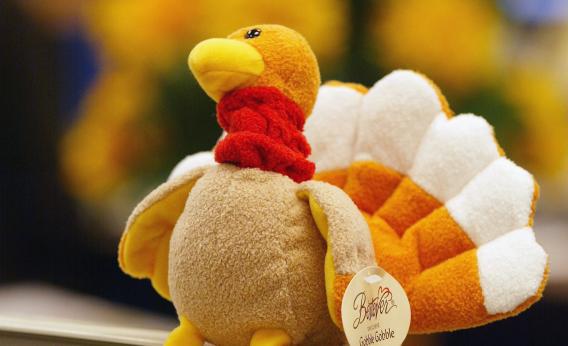I don’t remember who, but I saw someone express surprise earlier this week about a supermarket offering a sale on cranberries. Shouldn’t the price go up to match the seasonal peak in demand for cranberries right before Thanksgiving? As I wrote last year, this is actually typical. When goods have a strong seasonal peak demand point they often get cheaper at peak times.
For some fancier turkeys, prices probably do rise with holiday demand. But David Harvey, the U.S. Department of Agriculture economist in charge of poultry, explains that when it comes to your basic holiday bird, “so many stores discount them” and “almost all the discounting is done on frozen birds.”
The fact that prices for certain goods fall during peak demand periods is actually well-known among economists who care about such things, and it applies beyond Thanksgiving. Harvey’s explanation for the price drop is the most orthodox: Retailers heavily discount key seasonal goods in order to get customers in the door, then make their profits selling sweet potatoes and cream of mushroom soup. But in a 2005 paper “Why Does the Average Price of Tuna Fall During Lent,” Aviv Nevo and Konstantinos Hatzitaskos exploited a very detailed dataset to cast some doubt on this theory. Consider beer and the 4th of July. Beer sales skyrocket for the holiday weekend primarily because people are buying beer to serve at parties. It’s not surprising that people buying beer under those circumstances select beers that are, on average, cheaper and of lower quality than the beers purchased for home consumption on normal days.
Something similar, they show, seems to happen to tuna during Lent. Each year, tuna sales skyrocket during Lent even as average prices fall. But a painstaking examination of sales at a large supermarket chain shows that this is almost entirely a “substitution effect.” In other words, some brands of tuna are more expensive than others. During Lent, the cheaper brands gain market share at the expense of the more expensive ones. It’s at least possible that the turkey price drop represents the same phenomenon. Non-November whole frozen turkey purchases are driven by idiosyncratic people who for some reason want a turkey even though whole fresh chickens are cheaper and much easier to cook. These people are perhaps less price-sensitive than the once-a-year turkey buyers who stumble into stores and pick the cheapest bird possible. In the specific case of cranberries, I bet the discount loss-leader effect dominates.
